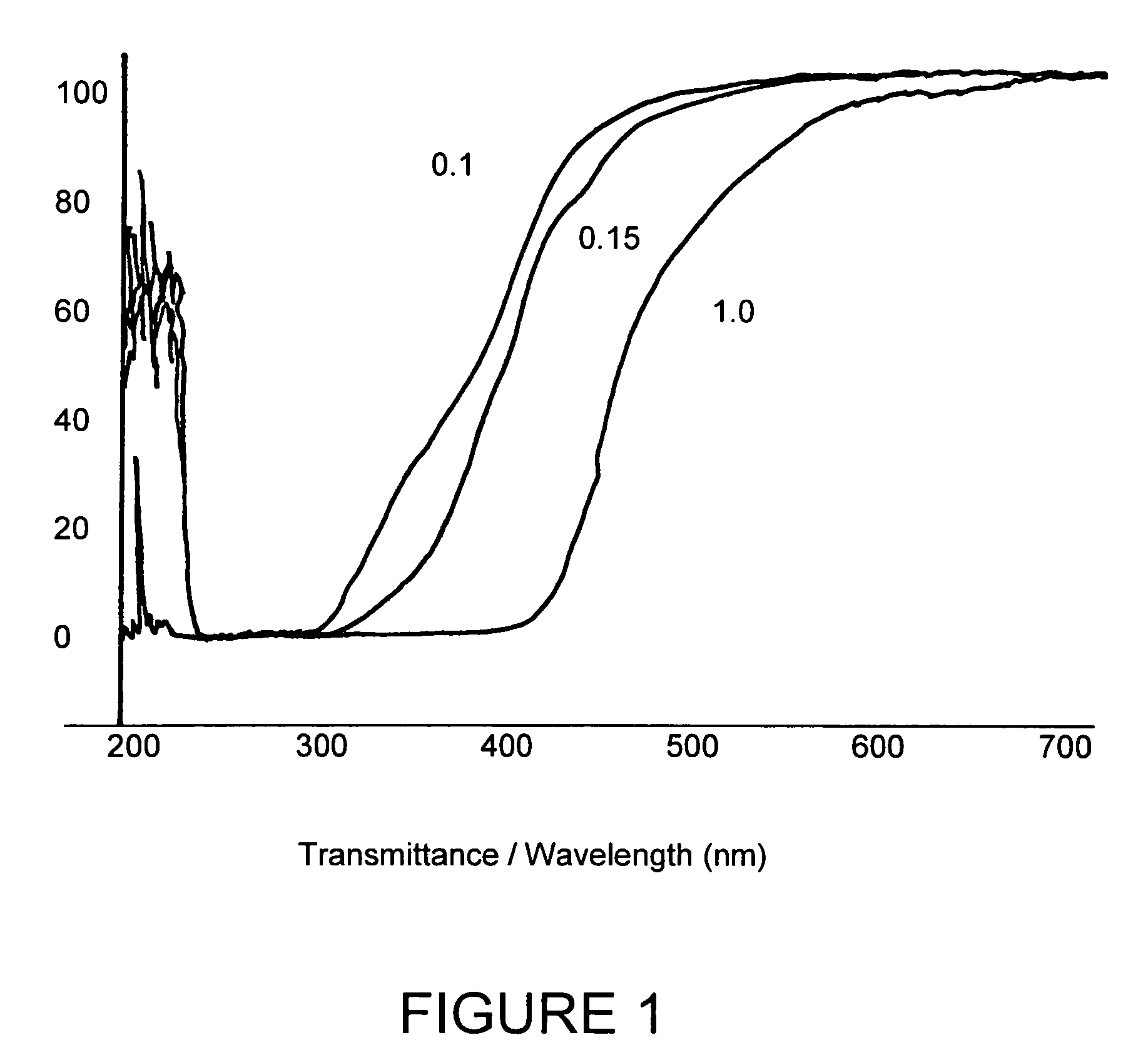Process for manufacturing intraocular lenses with blue light absorption characteristics
a technology of intraocular lenses and blue light absorption, which is applied in the field of process for manufacturing intraocular lenses with blue light absorption characteristics, can solve the problems of increased postoperative incidence, less popularization of more rigid iol implants in the market, and potential danger to the retina of blue light (400-500 nm)
- Summary
- Abstract
- Description
- Claims
- Application Information
AI Technical Summary
Benefits of technology
Problems solved by technology
Method used
Image
Examples
example 1
Synthesis of N,N-bis-(2-hydroxyethyl)-(4-phenylazo) aniline, (Solvent Yellow 58)
[0025]The synthesis of N,N-bis-(2-hydroxyethyl)-(4-phenylazo) aniline is accomplished by the coupling of a diazonium salt of aniline with N-phenyl diethanolamine. A detailed procedure for synthesizing N,N-bis-(2-hydroxyethyl)-(4-phenylazo) aniline is disclosed in D. L. Jinkerson, U.S. Pat. No. 5,470,932.
example 2
Synthesis of N,N-bis-(2-[acryloxyethyl)-(4′-phenylazo)aniline
[0026]A 1000 mL 3-neck, round bottom flask connected with a reflux condenser and a drying tube, is charged with 250 mL of methylene chloride, 5.7 grams (0.02 mole) of N,N-bis-(2-hydroxyethyl)-(4-phenylazo)aniline aniline and 4.04 grams of triethylamine. The contents are chilled using an ice bath. Through a dropping funnel, 7.24 g (0.04 mole) of acryloyl chloride is added into the flask over a period of 30 minutes. The ice bath is then removed and the contents are continuously stirred overnight. The mixture is then filtered and then condensed using a rotavapor. High performance liquid chromatography (HPLC) analysis indicates only one major product. The product is then passed through silica gel chromatography to give final purified product with a yield of at least 80 percent. The product is identified by nuclear magnetic resonance (NMR) and Mass Spectroscopy.
example 3
Preparation of Hydroxybutyl-Terminated Copolymer of Dimethylsiloxane and Diphenylsiloxane (with 25 mole Percent Phenyl Content)
[0027]1,3-bis(hydroxybutyl)tetramethyl disiloxane (33.70 g, 0.118 mole), dimethyidimethoxysilane (403.18 g, 3.25 moles) and diphenyldimethoxysilane (272.33 g, 1.08 moles) were added in a one-liter round bottom flask. Water (78.29 g) and concentrated hydrochloric acid (11.9 mL) were then slowly added to the flask. The contents of the flask were refluxed for one hour. Methanol (253.3 mL) was distilled from the contents. Water (160 mL) and concentrated hydrochloric acid (130 mL) was added to the flask. The contents of the flask were refluxed for one hour. The contents of the flask were then poured into a separatory funnel. The silicone layer was separated, diluted with 500 mL ether and washed once with 250 mL water, twice with 250 mL 5-percent sodium bicarbonate aqueous solution and twice with 250 mL water. The final organic layer was dried with magnesium sulfa...
PUM
| Property | Measurement | Unit |
|---|---|---|
| refractive index | aaaaa | aaaaa |
| refractive index | aaaaa | aaaaa |
| thickness | aaaaa | aaaaa |
Abstract
Description
Claims
Application Information
 Login to View More
Login to View More - R&D
- Intellectual Property
- Life Sciences
- Materials
- Tech Scout
- Unparalleled Data Quality
- Higher Quality Content
- 60% Fewer Hallucinations
Browse by: Latest US Patents, China's latest patents, Technical Efficacy Thesaurus, Application Domain, Technology Topic, Popular Technical Reports.
© 2025 PatSnap. All rights reserved.Legal|Privacy policy|Modern Slavery Act Transparency Statement|Sitemap|About US| Contact US: help@patsnap.com


